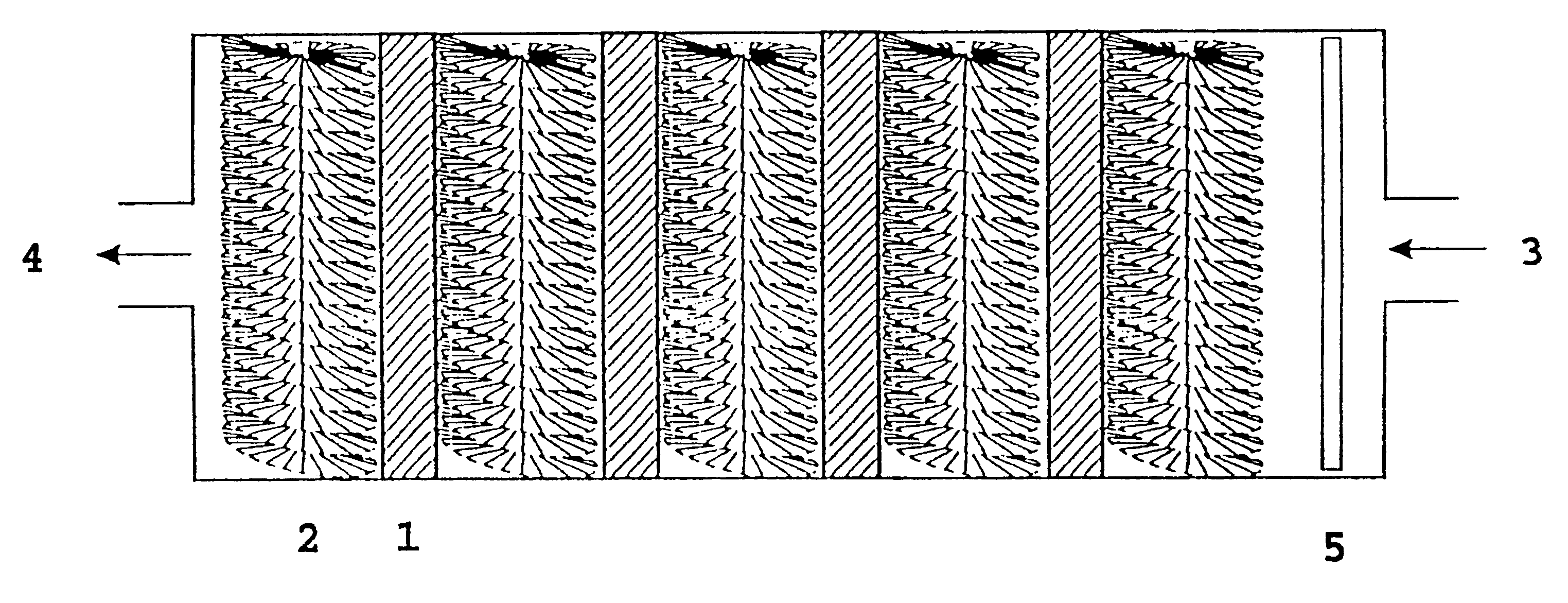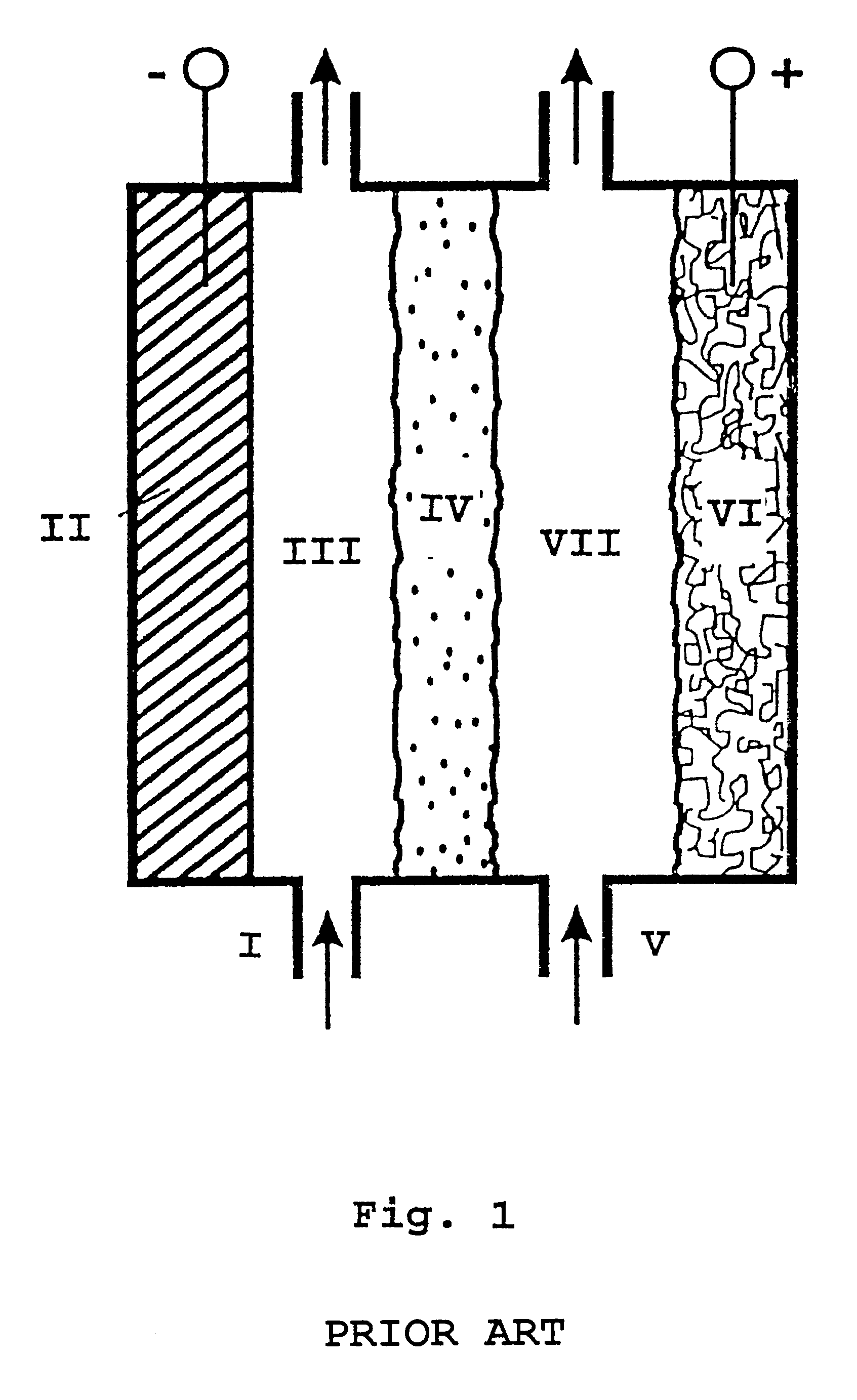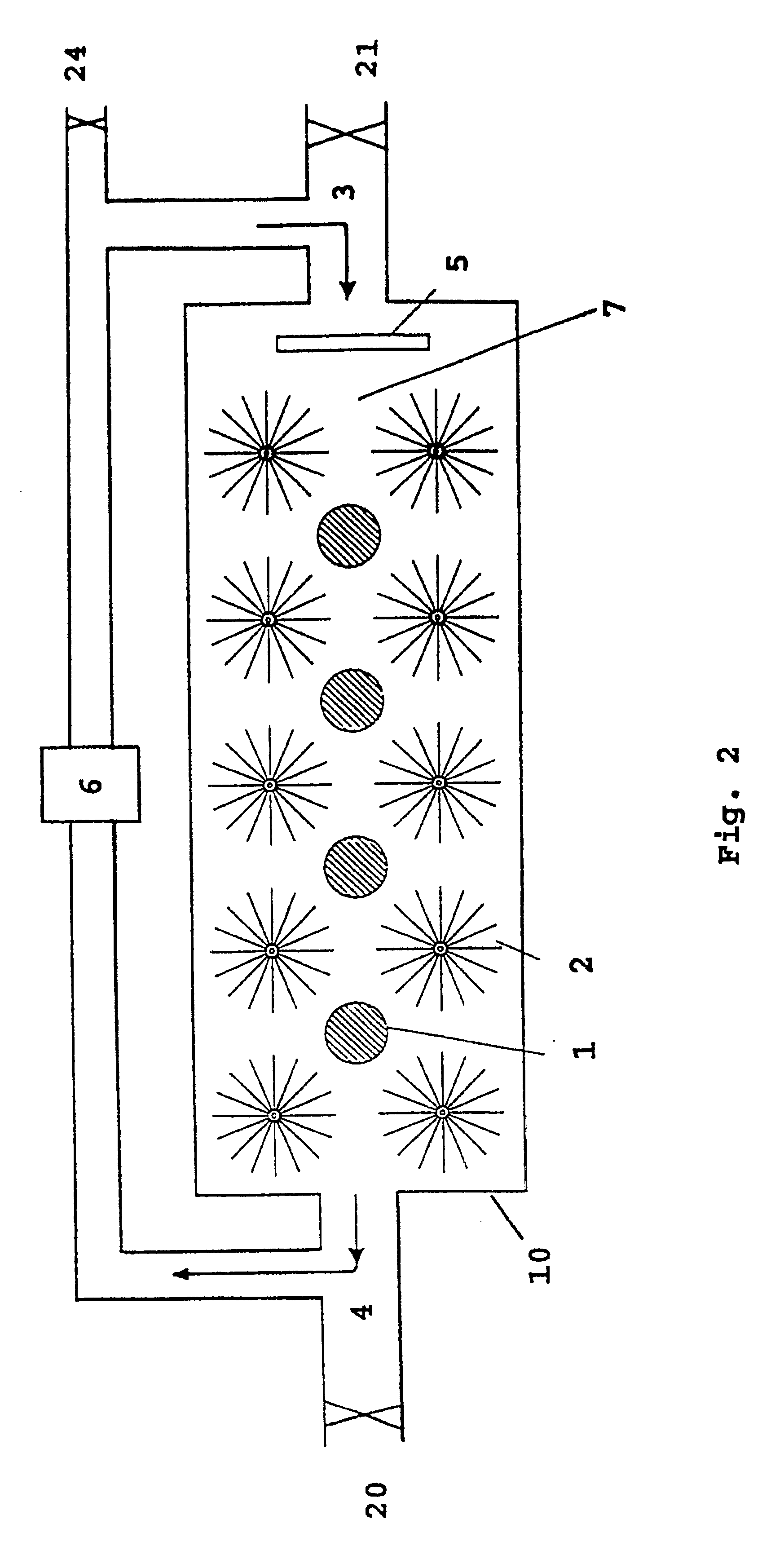Battery system
a battery and system technology, applied in the field of batteries, can solve the problems of long expected discharge time of such batteries for underwater vehicles, large amount of energy, and pure hp implies a handling risk, and achieve the effect of quick mechanical charging and high utilization of reactants
- Summary
- Abstract
- Description
- Claims
- Application Information
AI Technical Summary
Benefits of technology
Problems solved by technology
Method used
Image
Examples
Embodiment Construction
FIG. 2 shows the main features of a cell 10 with anodes 1 and cathodes 2 in an electrolyte 7. The cell produces electric energy by the reaction between hydrogen peroxide or oxygen, and aluminium or lithium or a mixture thereof, and hydroxyl ions in water. Cathodes 2 are cylindrical and based on radially oriented carbon fibres attached to a stem of metal. Anodes 1 and cathodes 2 are arranged in a flowing electrolyte 7 of KOH or NaOH dissolved in water, and with the electrolyte 7 containing the oxidant in low concentration.
Pump means 6 is adapted to pump electrolyte 7 from an electrolyte outlet 4 in the cell 10 to an electrolyte inlet 3 in the same cell. In a preferred embodiment, there is arranged an electrolyte distributor 5 after inlet 3 on cell 10, which causes the electrolyte 7 to be distributed as evenly as possible across the cross section of cell 10.
For a battery containing several cells, the electrolyte can move from cell to cell (serial flow) or parallel via in-and outlet ma...
PUM
| Property | Measurement | Unit |
|---|---|---|
| time of discharge | aaaaa | aaaaa |
| weight | aaaaa | aaaaa |
| weight | aaaaa | aaaaa |
Abstract
Description
Claims
Application Information
 Login to View More
Login to View More - R&D
- Intellectual Property
- Life Sciences
- Materials
- Tech Scout
- Unparalleled Data Quality
- Higher Quality Content
- 60% Fewer Hallucinations
Browse by: Latest US Patents, China's latest patents, Technical Efficacy Thesaurus, Application Domain, Technology Topic, Popular Technical Reports.
© 2025 PatSnap. All rights reserved.Legal|Privacy policy|Modern Slavery Act Transparency Statement|Sitemap|About US| Contact US: help@patsnap.com



